In The Moment
Issue 70, Summer 2023/2024
Regular Newsletter of the Australian Society of Teachers of the Alexander Technique AUSTAT Inc.
Click on article name to jump to article:
ARTICLES
- From the Editor
- From the Chair
- AUSTAT Conference 2024 Report
- Remembering Vivien Mackie (1931-2023)
- Vivien Mackie's passing
- Alexander Technique on the Air Waves and Book Shelves
- Book Review: Irene Tasker: Her Life and Work with the Alexander Technique
- Book Review: We Are Electric
- The Alexanders – From Wiltshire to Wynyard Part 5
ANNOUNCEMENTS
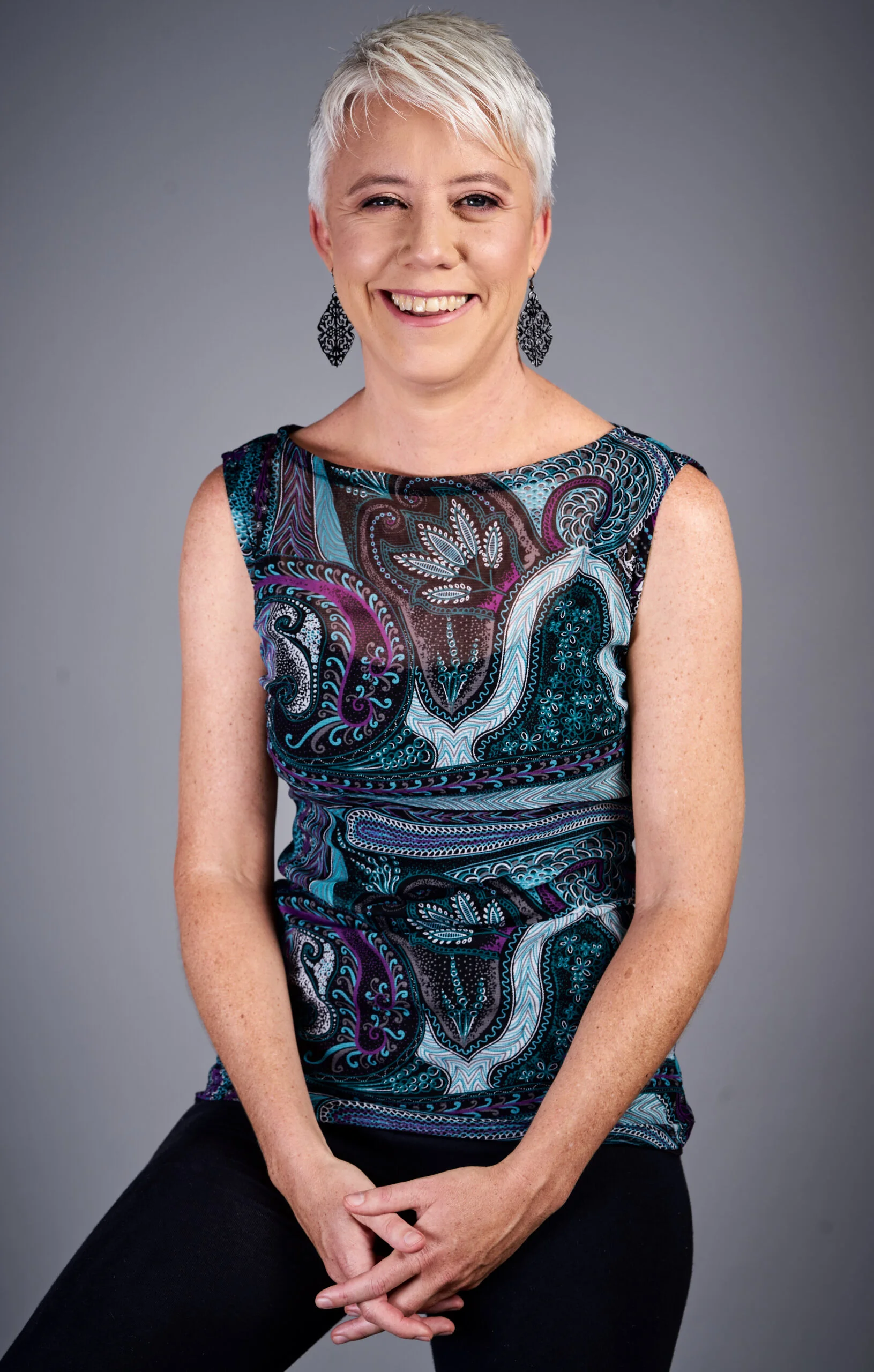
From the Editor
This will be my last ITM edition as editor. I am resigning from the role of editor so I can focus on finishing my studies (I am in the middle of a Masters of Counselling) and on some other personal priorities. I’ve greatly enjoyed my time as editor of the ITM. I have received a lot of love and gratitude from the community for my work in this role, and I feel very appreciated.
This means that AUSTAT will be looking for a new ITM editor! I highly recommend this role for someone who would like to keep abreast of Alexander Technique developments, and get to know our wonderful community a bit better. The role does not require a huge amount of time. Our community members do most of the hard work by sending in articles for publication, and the lovely Karen Nankervis does most of the rest of the hard work by laying out the ITM. Your job is to assess and edit content for inclusion, and sometimes chase up items. If you are able to proactively seek out Alexander Technique news and events that is fantastic, however that responsibility is also shared across our community.
During my tenure, AUSTAT Council has improved and streamlined processes for editing and publishing the ITM, and reduced the number of issues from four to three issues a year, so the job has been made even easier. Editing the ITM is a great opportunity to give back to the Alexander Technique community, so if you think this role might be for you, please get in touch with Karen Nankervis.
Thank you so much to everyone who contributed to the ITM over the past three years, and to all those who sent me kind messages of encouragement and gratitude.
I am looking forward to finishing my Masters, and will keep in touch with the Alexander Technique community in other ways.
Emma Hyland
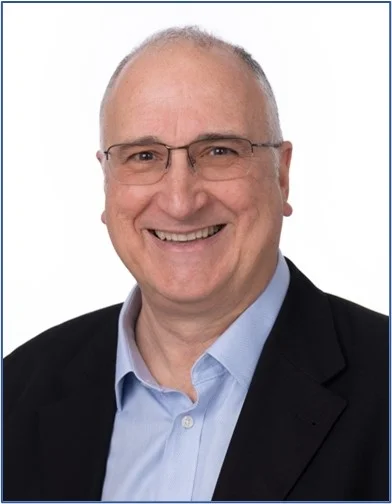
From the Chair
At this year's AUSTAT Annual General Meeting, 88% of the Members present voted for monumental change to our Constitution. Our policy on teacher training changed in an innovative and responsive way after many years of consideration and two years of concerted design and discussion with membership.
The change in Constitution wasn't a spur of the moment decision or a rushed half-baked idea. Rather it was a culmination of thinking, planning and developing a workable model based on the Australian Quality Framework method. In the space of a year, AUSTAT has developed a Teacher Training Standard, a Standard for Teacher Trainers, an online AUSTAT Assessors Course and a large number of documents to support the implementation of the change. Many people volunteered their time to put eyes on the documents, to give feedback, to suggest possible problems and possible improvements. It was an inspiring insight into how, when we work together for a common cause, great outcomes can occur.
To characterise the change, entry into AUSTAT membership will be based on a person showing evidence that they meet the AUSTAT teacher training standard. This is not going to affect anyone's current membership of AUSTAT. However, from 2027 newly graduated trainees will need to evidence that their training has met the AUSTAT standard, in order to become a full teaching member. There is a lot more detail to the change that we have implemented. There will be continuing review, updates and news on this process.
As is my duty, I notified the affiliating society STAT of the changes to our Constitution immediately following our historic vote. STAT's response was as follows:
"I have shared your message with STAT Council. We are very impressed with the thorough programme that AUSTAT has put together, that must have required a great deal of time and resources. We are also very heartened to see such a big majority of our Australian colleagues voting in favour of such a big change. Congratulations from us."
Antonella Cavallone Chair STAT
At December's Council meeting we are ratifying many of the supporting documents that allow this change to function in a systematic way. Most members will not notice a great change except for those who are involved in teacher training. Copyright for all documentation will transfer to AUSTAT from that meeting. Also, an AUSTAT Standards Review Sub-Committee will be formed under the AUSTAT Constitution to begin the process of continuous review and improvement.
Membership has shown that we can work for significant outcomes. Council is now setting out to deal with the considerable problems of low membership numbers and low public awareness of the Technique. In 2024, I hope that together we will see the development of a more sophisticated web and social media presence; continuing education programs including online learning for members; promotional events; development of an AUSTAT friends mail list to nurture ongoing promotion of your events, lessons, workshops, group classes, shows, talks and so on.
Council is exploring avenues to facilitate learning from each other. Specialist knowledge such as working with musicians, actors, sportspeople, Parkinson's sufferers, the neurodivergent community, setting up a business, developing a web presence, advertising and marketing, business courses and more are being considered. We are full of ideas and would like your help again; this time to begin to overcome many years of inertia and to collectively work for improved outcomes.
There is strength in numbers. It is part of the reason that a professional body can assist you to make your business happen. AUSTAT provides a professional representation for us but it is also a hub where we can network, promote, bring people from the community into our sphere, and take Alexander Technique out into the community.
I wish you all a great season of festivity and prosperity for the New Year.
Michael Shellshear
Chair AUSTAT
AUSTAT Conference 2024 Report
By Michael Shellshear
I was presenting at the Linen Room: a place where nuns and stolen generations women were put to work for no pay. I hoped I could transcend that vibe. The room was noisy and chaotic; a difficult space to control.
A moment or two before presenting I was asked to work with a wonderful woman who had travelled from Queensland after reading The Use of the Self. Never had a lesson. What an amazing thing to do. Read the book and travel to find out what this Alexander Technique is all about! Yarmila walked in the footsteps of so many people who had read FM Alexander’s works and just had to satisfy their curiosity. They had to discover the potential of his words. Marj Barstow read MSI and travelled to England to learn with FM. That story had been part of my Alexander folklore, and here about 90 years later was the folklore playing out again. I remembered a guy who came to see me in Newcastle twenty-five or thirty years ago. He had read The Use of the Self over and over for many years. I don’t mean to be harsh but his interpretation of Alexander’s work gave credence to the saying that you can’t learn Alexander Technique from a book.
Back to Melbourne. Previously, my task was going to be to provide an activity for those few who weren’t interested in marketing the Technique. My plan was to present on giving a first lesson; now I was going to be given the opportunity to walk the walk as well as talk the talk. To give someone a first lesson under these circumstances is quite a responsibility. To do so in front of an audience in a noisy room is an additional challenge.
After many years of teaching Alexander Technique, there are many strategies, activities and approaches that I have at hand to offer to a student. Perhaps my most important learning over my years of teaching is to not try for everything in a lesson. I’ve learned that each lesson is a step on the journey. I will aim for one or two steps, and no more. I think that I was able to demonstrate some knowledge and skill to those watching.
I have been very lucky to have had some great teachers in my life. I learned many years ago from my mentor, William Brenner, that the quality of your communication is the response that it evokes. My student’s response was genuine and congruent. It took a while but she discovered a little something about her movement and about a gentle request that she could make for a dash of improvement.
The response from my audience was engaged and interested. I think that there was some learning available for them. There were some good questions that I was happy to consider and on which I could provide a perspective. Personally, I learnt that my best presentations are ones where I allow myself to teach from my process, rather than trying to be something. I truly think that the most valuable offering I have is my process; that I struggle every day to bring greater clarity to Alexander’s discoveries within my self. That there isn’t a place where I can’t improve or discover something by applying constructive consciousness.
The rest of my conference experience was great respect and quiet gratitude to be amongst so many of my colleagues, and to witness the ongoing evolution of their own understanding and implementation of Alexander’s discoveries.
If you haven’t ever been to an AUSTAT conference, there are many benefits. It’s instructive to see how others teach. You can learn a lot. It’s challenging but often rewarding to participate in a class; to give over for a few moments to a colleague, a mentor, a teacher, and to be taken on a learning journey through their sensorium and through their interpretation of the work. The greatest benefit from my point of view is to work to understand our professional community; to consider the challenges that we all face and to plan for solutions, new ideas and new directions for presenting the Alexander work that has so impressed us.
Sharing a meal, a glass of wine and our stories also presents a unique opportunity to cement friendships with people who share our Alexander vision.


Remembering Vivien Mackie (1931-2023)
By Annie Robinson
Vivien Mackie died on Wednesday, 1st November, at the age of 92, in Glasgow where she had been living for a number of years.
Vivien was a brilliant cellist and a courageous and innovative pioneer of the application of the Alexander Technique to teaching and playing music. She documented her own journey of discovery, first with her three years of lessons with the great cellist and educator Pablo Casals when she was a young cellist, and later through her experience of the Alexander Technique and the similarities she saw in what she had learned with Casals, in her book Just Play Naturally. Vivien often said that through the lessons she had with Casals, her brain was completely rewired. Her experience of three years of lessons with Casals, when most cellists were lucky to have one or two lessons, was something that was ever-present for her. For example, Vivien spoke of the brain that we have at the tip of every finger, each with its direct line back to the main brain. She taught and understood music as a fundamentally organising force, in the way that “the cat is organised by the mouse”. What is required is attention, readiness, poise — qualities that we learn and cultivate through the Alexander Technique.
The first time I met Vivien, in 1988, I was a young singer, struggling with many aspects of my voice after years of vocal training had left me confused, tense, and “end-gaining”. In a workshop setting, Vivien was able to show me, with her wonderful hands, how much work I was making for myself in the act of singing, and how I could do less, with great and immediate effect. I didn’t know anything about the Alexander Technique at the time, but was aware that I had encountered something new, profound and life-changing in Vivien’s work. I knew I had to pursue the Alexander Technique and become a teacher, despite being a penniless music student at the time.
I joined the Trinity College Alexander School in Melbourne (1990-1992). This course was specifically for trained musicians. Our training was a rich, challenging time for me and my fellow students, giving us all the chance to observe and experience huge changes in our playing and our understanding of how to inhibit and direct in the face of a big stimulus - the complex skill of making music. Of course, we worked with the traditional Alexander teacher training skills every day: chair work, table work, studying Alexander's writing, reading aloud, studying anatomy - and we also worked with music every day. This created in me a curiosity abut and a love of teaching - teaching Alexander Technique and teaching singing, and the joy of combining the two - which has endured for more than thirty years.
Vivien decided to run an Alexander training course for musicians because of everything she had learned with Casals, and later with Walter Carrington, and all the work she had done after her training, working with her own playing and with many other musicians to apply the work. Vivien didn’t believe that the best way to learn and apply the Alexander Technique was to improve your conditions of use in isolation (i.e. on a training course, having given up your instrument) and then to return to a high level of skilled activity such as playing an instrument or singing and automatically be able to take your improved conditions into that act. She knew that you could use the stimulus of playing your instrument (or singing) positively, but the help of the skilled hands of the Alexander teacher, and their words, were vitally important.
Vivien’s training course and her methods were questioned, criticised and sometimes condemned, and deliberate attempts were made to derail the Trinity College course. She was accused of not teaching hands-on work, which could not be further from the truth. These attacks caused Vivien (and all of the graduates of Trinity Alexander School) a lot of heartache and some anger. The effects of the lies told about the training school—particularly the one that we had no hands-on training—followed me and my husband across Australia, where, when we arrived in Perth, we were ostracized because we were not considered “proper” teachers. I wish it could have been otherwise. Yes, Vivien’s passion for the Alexander Technique, for helping people to become the best musicians they could be, her total commitment to excellence in playing and teaching, could make her seem brusque, even harsh sometimes. To me, all that she did and said was done with love and uncompromising integrity. Having Vivien as my director and mentor was to have received the gift of truly great teaching.
In her later life Vivien was devastated by the loss of her hearing, which ultimately meant she had to stop playing her cello. She took great joy in her garden, sending me photos of her camellias and roses, and continued to teach until only a few months ago. Vivien wrote me an email last year describing a lesson she had just given a young cellist in Glasgow, and how the lesson had made her feel alive and vital, still able to communicate and enjoy the work. How the Alexander technique continued to be a powerful and beneficial organising force in her life as well as in her students.
Vivien travelled widely, visiting us a number of times in Perth, running music workshops and teaching Alexander Technique to dedicated pupils. We also visited her in London and later in Scotland.
I had an email from Vivien in the week before she died, sounding cheerful, looking forward to getting a new TV and going out for coffee with friends. She had been living on her own in her flat in Glasgow since the departure of her live-in carer Alessandra who had been obliged to return to Italy because of the COVID lockdowns. Life was becoming difficult, but with the help of neighbors and friends she was managing the day-to-day challenges of aging.
Her friend and colleague Barbara Harrington wrote to me after Vivien died saying: “Vivien died on Wednesday quite suddenly in hospital. I was with her the day before, and she said she was ready to go. She was tired and looking for peace. She was so gracious about it all – I hope I can be so gracious when my turn comes.”
Vivien played a huge role in my life, and her work continues in my teaching. I feel I still have so much to talk with her about — she was endlessly curious, excited by life, always ready to explore and reflect. She was delighted by simple things. It will take me some time to come to terms with the loss of her friendship and mentorship, as I celebrate meeting and knowing her these last thirty-five years.
Annie Robinson, Perth Western Australia, December 2023

Vivien with Mark McGee and Richard Beavitt, Trinity College Alexander School

Vivien, Fran Power and Richard Beavitt in 1992 at the Trinity College Alexander School

Vivien and Anne Robinson on the top of the Bealach na Ba in the Scottish Highlands, summer 2016.
Vivien Mackie’s passing
Jane Refshauge
I was very saddened to hear the news of Vivien Mackie’s passing. I first met Vivien in 1985, when I was invited by Erika Whittaker to an afternoon tea for Alexander Technique teachers in Melbourne to meet Vivien. During the conversation I mentioned that I was interested in training as an Alexander Technique teacher but I wasn’t sure what school I’d choose. I had heard of the school proposed for Melbourne, to be co-directed by John and Carolyn Nicholls, I’d also made enquiries with AmSAT in New York City, where I’d been living on and off for 6 years, and where I’d been “the body” for student teacher trainee Eva Karczag during her final year of student clinic. I mentioned to Vivien that I was thinking of starting here in Australia, but if I didn’t like it I’d transfer to AmSAT. Vivien was horrified at this plan and made it clear to me that Alexander Technique training schools relied on a student retention in order to be viable.
As it turned out, once I’d started my training at MATTS in Melbourne I was so satisfied that I stayed and completed my training in 1989. Vivien invited me to teach on her Trinity College AT Training school in 1991, and we continued a professional and then personal relationship since that time. Vivien was fascinated how I worked with her trainees with legs. As I’d started ballet at a very early age (as a prescription for rotated ankles), I was aware how it is possible not only to pull one’s head back and down but to pull one’s head down from one’s legs. She called me “the leg person” from then on. I was fascinated with how Vivien assessed a student’s progress through breath. She had a seemingly magical way of perceiving a trainee student’s use and direction through listening to their breathing. As a ballet dancer who’d been taught to “tuck your diaphragm back and up” since early childhood, this was not a capacity I’d developed.
Vivien returned to the UK once the Trinity College training school had finished. She invited me to stay at her apartment in Earl’s Court in London numerous times when I attended Walter Carrington’s Teacher Refresher Course in Holland Park. She was a welcoming and generous host, and her ground floor apartment had a beautiful garden;a rare commodity in London.
Vivien was a remarkable correspondent and often sent Christmas cards and written notes to let me know her itinerary and dates of arrival and departure. Whenever she visited Melbourne to teach workshops at David Moore’s School of FM Alexander Studies (SOFMAS) she would call me and we’d arrange to have lunch or dinner. I’d drive her to and from wherever she was staying. In later years this was often to her daughter-in-law’s home in Bundoora where she so enjoyed the time spent with her two grand-daughters. During our drives we discussed many things: music, theatre, the Alexander Technique, the difference between private teaching and training teachers, child development, children, marital tensions, being a single mother, grief and loss, dance, living with chronic illness, sailing boats and other topics.
I attended many workshops with Vivien at David’s school. We shared a number of private students who were professional musicians, who worked with her when she was in Melbourne. When I let one of these student’s know of Vivien’s passing she replied with this memory:
I remember in one of my lessons with Vivien she had me drawing the melody I was playing (Brahms) on the wall in large, sweeping strokes. It was very helpful with being more expressive in the melody with my bow movements… It feels like the end of an era with Vivien gone.
Over time, Vivien suffered from loss of hearing and I suffered from electromagnetic sensitivities. We developed an extensive knowledge of the best café and restaurant tables in Melbourne with the least exposure to sound or mobile phones, so that she could hear and I could avoid getting a migraine: the corner table for two in the Provincial room at The North Star Hotel, table 11 in the air shaft at LeCoq, the back corner table at Marios or the members dining room at my tennis club were the favourites; and later in time a take-out sushi from Akari in Fitzroy that we’d eat at my dining table.
Vivien moved from London to Dowanhill, Glasgow. I was able to reconnect with her there for Erika Whittaker’s 90th birthday party, which I attended in Scotland! A fun time was had by all, with many Alexander Teachers from around the world, Erika’s daughter Ann Cragoe, and her grandchildren with their partners.
Vivien leaves a lasting legacy, in her book Just Play Naturally: An account of her cello study with Pablo Casals in the 1950’s and her discovery of the resonance between his teaching and the principles of the Alexander Technique(1). I loaned this book to my student who is a professional cello player. They returned it saying it was the best book they'd ever read about playing the cello!
Vale Vivien you will be missed.
(1) Just Play Naturally: An account of her cello study with Pablo Casals in the 1950's and her discovery of the resonance between his teaching and the principles of the Alexander Technique (2002) Duende Editions Boston-London
Alexander Technique on the Air Waves and Book Shelves
By Jane Refshauge
I would like to bring the AUSTAT membership’s attention to a number of initiatives and contributions from Rosslyn McLeod to improve the public awareness of the Alexander Technique in Australia. These are available on her YouTube channel and website, and from Mouritz press.
Rosslyn McLeod has dedicated her life to promoting awareness of the Alexander Technique in Australia. As media advertising is costly, Rosslyn has been a trail blazer in seeking radio interviews and writing articles for specialist magazines with a focus on music and sports.
On 1st September 2022, Rosslyn was interviewed by Phillip Clarke for the ABC Nationwide Radio Broadcast Nightlife, and he presented a programme with Rosslyn speaking extraordinarily eloquently about the Alexander Technique for twenty minutes. Rosslyn has now uploaded this programme onto YouTube:https://www.youtube.com/watch?v=0xRQ_xhwjcY.
Rosslyn was able to provide a detailed summary of FM Alexander’s life and work, and modern-day information about ‘the work’. She even managed a reference to the 12th World Alexander Technique Congress that was recently held in Berlin! On the YouTube recording of the interview Rosslyn has supported the spoken word with photos, including small excerpts from the DVD that she has produced: Frederick Matthias Alexander: His Life … His Legacy. This is a unique documentary showcasing the life and work of Frederick Matthias Alexander ~ the originator of the Alexander Technique. Available from her website: fmalexanderdoc.com
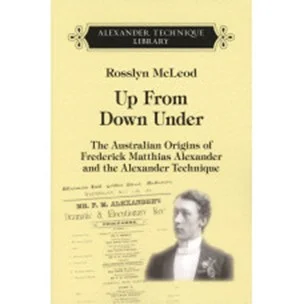
There are also three poems inspired by Rosslyn’s time training in London about all things “Alexander” that are thought provoking, entertaining and a bit of fun!
Rosslyn has recently had the fourth edition of her book Up From Down Under: The Australian Origins of Frederick Matthias Alexander and the Alexander Technique published by Mouritz Specialist publisher on the Alexander Technique (see https://www.mouritz.org). First published in 1994, this new edition contains additional information, pictures and appendices.
I would like the membership to know of these additions to the information available about the Alexander Technique, and I am grateful to Rosslyn for producing them.
Book Review
Irene Tasker: Her Life and Work with the Alexander Technique
by Regina Stratil
Review by Marguerite van der Merwe
In a world of cheap paperback books, what a pleasure to hold and read through the hardcover edition of Irene Tasker: Her Life and Work with the Alexander Technique. Published (2020) by Mouritz, this is skillfully constructed, has a steady-to-hold cover, with an enticing 458 pages printed on 90gsm Munken White.
In the comfort of the pages, I have been inspired to read, re-read, and delve into Regina Stratil’s extensively researched biography, one which can be of interest, learning, and inspiration to all involved in the awesome work of understanding and teaching Frederick Matthias Alexander’s (FM’s) work. I offer a few personal responses to the value it has uploaded for myself.
Regina has gifted the international Alexander Community with the history of a meticulous, unrecognized teacher who worked closely with FM for many years, was mentored and taught personally by him at various times, and taught in various situations under his guidance. Irene taught in England, America and then in South Africa where, following the advice of FM and one of his influential ‘students’ in London, she travelled to Johannesburg with the purpose of embedding the work. Through March 1935 to January 1944 she lived and worked in Johannesburg and the Orange Free State (An independent Boer state in South Africa which existed in the second half of the 19th century.) returning briefly to England for ‘refresher’ work with Alexander. She returned a year later following Jokl’s ‘Manpower’ article attack on Alexander’s work and the Libel case (in which Alexander was awarded damages). In Spring 1949 returned to England permanently and lived there until her death.
In 1924 Tasker founded and directed Alexander’s Little School for ten years: a noteworthy pioneering experience. This equipped her for her move to South Africa where she lived and worked (in two periods) for a total of more than 12 years.
The format of Stratil’s book is arranged around actual words (from Archives) of people involved directly or indirectly during influential times of FM’s work and career, and thus represents a ‘live’ account of how things were personally and actually experienced. Reading the many Personal Letters, Notes and Comments, plus her own Notes and Comments (here put for the first time in public view) engenders glimpses and feelings of being actually present at, and privy to, interactions, conversations and reflections at the time with many who were taught by Alexander himself and whose names have come down to us through the ‘lineage’. We gain a more rounded, intimate sense of the personalities involved, and the perspectives of their times.
The author writes: “Irene Tasker (19.12.1887 – 21.7.1977) was an extraordinary person. Born in the Victorian age and growing up in a time when opportunities were limited for women, she obtained a university education and forged her own career despite frustrations and setbacks. The way she lived her life, her zest and perseverance, her humble but extremely principled attitude and her observations in the Technique, are an inspiration to me. I hope readers will be inspired as well.” (p.ix)
Stratil’s sources came initially from her discovery of Irene’s handwritten notebook: entries relating chiefly to visits to Alexander’s teacher training course, a teacher-refresher course with Alexander in 1930, and her own, and her brother’s, lessons with Alexander. “I hope” wrote the author “that this biography will give credit to Irene Tasker for her role in, and contribution to, the development of the Alexander Technique… The book gathers information and provides sources concerning her pioneering work with the Little School (which she founded and directed for ten years) and similar work with children in South Africa, placing the Alexander Technique within the wider framework of the progressive education movement of the early 20th century.”
Important in any assessment of the work and the times is Irene’s allegiance and training in the Montessori method. That she was sent to Rome to work with the ‘Dottoressa’ explains her discovery-understanding of an important symbiosis with much of Alexander’s methods and principles. It seems that, in her own teaching career, Irene based her teaching principles and methods on an integration of these two methods/perspectives.
We in South Africa were privileged to have had for many years the Alexander work of Joyce Roberts who was trained in Johannesburg by Tasker. Joyce, herself a strong character and teacher, worked chiefly in Cape Town, initially in the rehabilitation of war-wounded, eventually agreeing to offer accredited Training Courses with Yvonne Becker, Joan Brokensha and Vivienne Schapera. SASTAT Archives holds Letters from Tasker to Joyce Roberts.
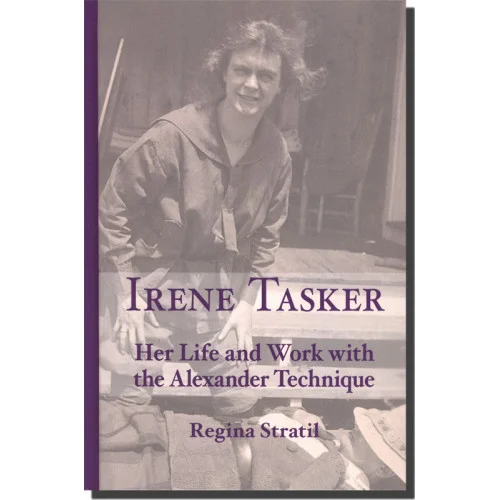
Stratil’s book is particularly enlightening, providing for the first-time detailed information from Irene Tasker herself and the people she worked and lived with in South Africa. As a lifelong citizen of South Africa, I have found great value in reading through and developing respect for this chapter of our history in the life of Alexander’s work. It includes a Letter of Introduction for Irene Tasker from Lord Lytton to General Smuts (8 December 1936; p.275).
Tasker’s timeline confronts us; revealing an illuminating and inspiring life’s work, undertaken in times and places where such teaching was unknown, perhaps ‘revolutionary’. It allows us, in our distance from their times and work, a humbling acquaintance and insight into the substance of the Great Work undertaken by others involved in our ‘lineage’.
In its meticulous recorded essence, Regina Stratil’s book confronts us with the wider framework of Alexander’s work in the early developing years and decades through the book’s records, notes, comments and words of people involved at the time. As I and many teachers gradually realise, we can be undeservedly and ignorantly free with our own opinions and perspectives deriving from a very different time, lifestyle, and world order.
A brief summary of Irene Tasker’s career:
Studies at Girton College, Cambridge (Classical Tripos); Governess 1910-1912 Worcestershire; 1913 Montessori training with Mari Montessori, Rome; 1913 Lessons with FM Alexander; 1913-1917 Montessori teaching UK & USA; 1917 – 1920 Working with Alexander, New York, London; 1921 visits Bangalore, India; 1921 on, working with Alexander on his first 3 books; 1924 starts Little School, runs it for 10 years, resigns 1934; 1931 Alexander’s first teacher training course; 1935 moves to South Africa, teaches in Brandsdrift (Orange Free State), Johannesburg, presents talks, lectures at Roedean School, Transvaal Teacher’s Association , SA Association for the Advancement of Science; 1937-1941 Joyce Roberts joins as assistant; 1941 Irene demonstrates to Jokl,- Alexander claims libel damages, 1948 Libel case won; 1949 Irene returns to England; 1955 Alexander dies; 1958 Irene suffers serious fracture of ankle and shin; 21 July 1977 dies of pneumonia in her sleep.
Extracts from the book:
Being a personal view of Stratil’s informative and detailed resources, many extracts from the book strike me as particularly important vis-a-vis personalities involved in the evolution of FM’s work at its beginning. This, in turn, informs all that I’ve been able to glean in a lifetime of delving into this extraordinary work of Conscious Constructive Control of The Use of The Self, and in my own life and times.
Here are some of my highlights; find your own!
Highlights from FM Alexander:
- ‘Never let the body overrun the head in coming forward: Never let the head overrun the body in going backward.”
- “The ‘pull’ on the head should be such that the upper back comes down. Stay UP to put hands on – continuing UP brings lightness to pupils.”
- “...undoing all stiffening (a reflex activity) – then the head frees and LENGTHENING happens of itself.”
- “Freedom IN thought and action – not ‘freedom of.”
- “Beliefs are what hampers us. Because of them, we are not experimental enough. Because of them, we have not enough of the adventurous spirit.”
- Irene Tasker in a Letter to Sarah Gertrude Millin: “…who intends studying this work, for whatever reason, is really embarking on a lifetime’s job.”
Irene’s notes:
“I have noticed how FM’s hands are always working relatively to each other. The two never gave the same impulse – always one working against the other – sometimes three or four or more impulses through separate fingers, knees etc.” (p.260)
Enjoy delving into the work of Irene Tasker, F.M.Alexander, and many significant others of this time!
May it offer a portal to enrich your own understanding and life.
SHALOM
Marguerite van der Merwe
Book Review:
We Are Electric - The New Science of Our Body’s Electrome
by Sally Adee
Reviewed by Ric Pellizzeri
In Articles and Lectures F.M. Alexander writes:
“When I employ the words ‘direction’ and ‘directed’ with ‘use’ in such phrase as ‘direction of my use’ and ‘I directed the use’, etc., I wish to indicate the process involved in projecting messages from the brain to the mechanisms and in conducting the energy necessary to the use of these mechanisms.”(1)
Alexander also writes in The Use of the Self that a teacher must support:
“1) the inhibition of the instinctive direction of energy associated with familiar sensory experiences of wrong habitual use; and
2) the building up in its place of a conscious direction of energy through the repetition of unfamiliar sensory experiences associated with new and satisfactory use.
This process of directing energy out of familiar into new and unfamiliar paths, as a means of changing the manner of reacting to stimuli, implies of necessity an ever-increasing ability on the part of both teacher and pupil to ‘pass from the known to the unknown’; it is therefore a process which is true to the principle involved in all human growth and development”(2)
FM writes about the general concept of energy, what is required to affect a change, what is needed to maintain and nurture our systems and move us through space. But where is the source and what is the nature of that energy? Is it important to understand energy and all its forms in a deeper way?
When an Alexander teacher places their hands on a student what are they touching? Clearly, skin, bone, muscle, tendons, ligaments, fluid and fascia. But they are also following the movement of the breath, sensing the contraction and lengthening of the muscles, detecting the pulse of blood through veins and arteries, perceiving (and sometimes hearing) the movement of the digestive system as well as the sparking of the nervous system. A vast awe-inspiring network of pulses, vibrations and movement.
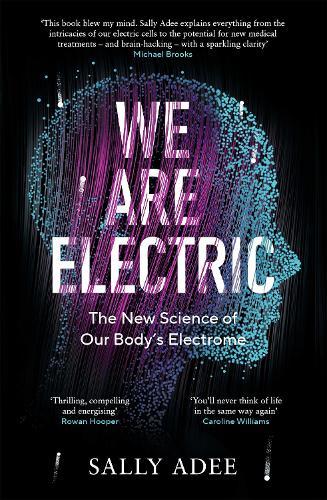
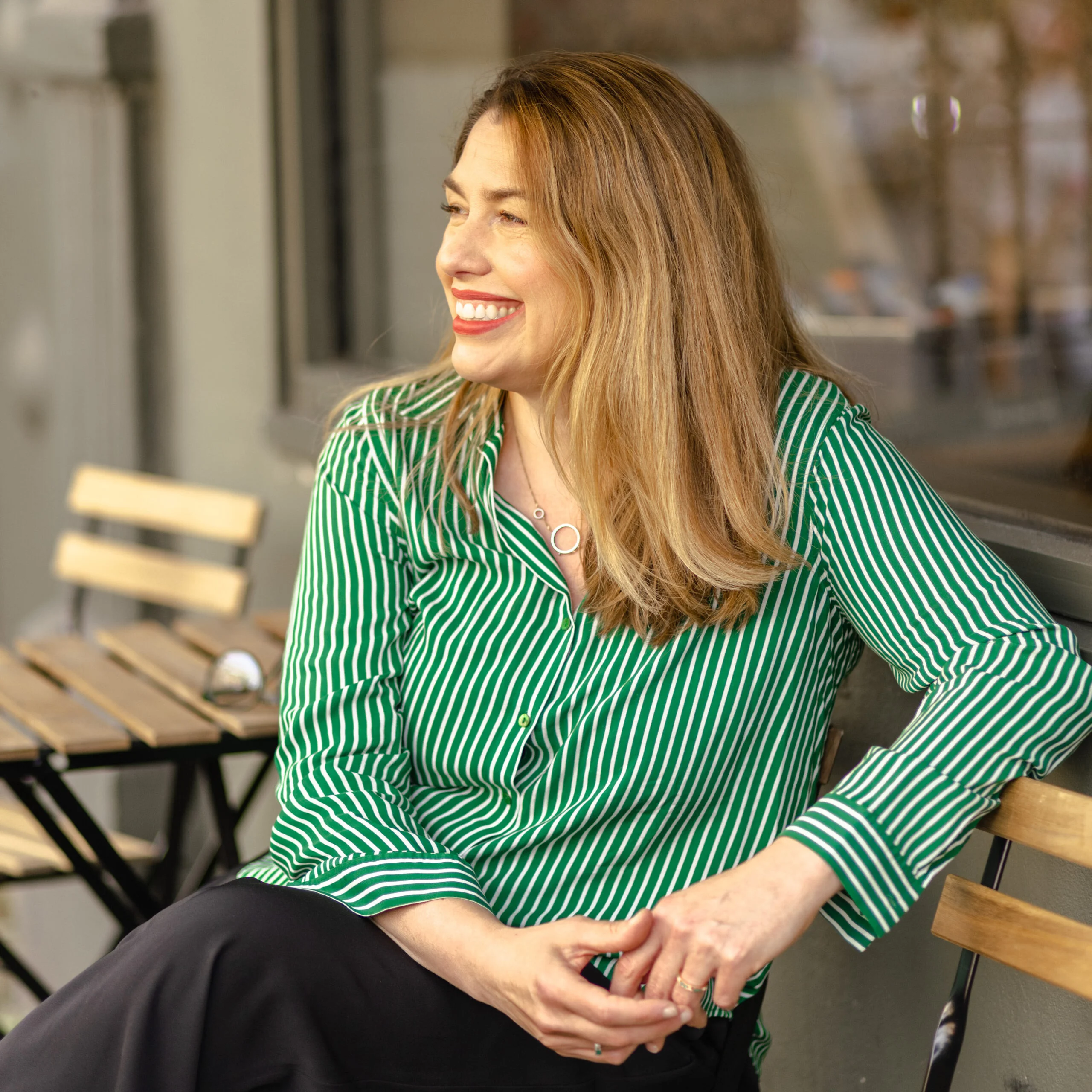
Author - Sally Adee
Sally Adees’s book, We are Electric, introduces, details the development of, and delivers a greater understanding of what she has labelled the body’s ‘Electrome’. This is a well told tale that starts with the history of bioelectricity, covering Galan, Aldini, Galvani and Volta, then takes us through the science of the body’s energy generating system, finally covering present and ultimately future directions in the use and understanding of this Electrome. This is a readable and coherent account of the all too human intrigues of the personalities involved and the captivating science.
If the frog is your spirit animal, this may not be the book for you. Frogs were central to the early experimentation of bioelectricity with countless volts charged through their dissected and exposed muscles, each twitch proving and disproving theories of the electrical response. The frog body-count is endless and the competition amongst the various scientists is relentless and occasionally unscrupulous, but always intriguing and entertaining.
There is a comprehensive account of how to understand the human body’s electrical language and how bioelectricity operates in the body and the brain, from the chemical reaction that takes place in every cell to the life it fosters. That tingling you feel when a cut in your skin interrupts the bioelectricity flowing through your outer envelope is the same current that also starts the healing process. As the book title affirms, we are truly electric.
“The human body runs on a very different version [of electricity]: 'bioelectricity'. Instead of electrons these currents are created by the movements of mostly positively charged ions like potassium, sodium and calcium. This is how all signals travel within the brain and between it and every organ in the body via the nervous system, enabling perception, motion and cognition”. (pg.14)
We are made up of about forty trillion cells, an ongoing debate that is still generating controversy and uncertainty. It is hoped that eventually the Human Cell Atlas study will shine a sharper light on the total number, meanwhile let’s just agree that we have a truckload! We also carry around countless trillions of bacteria, so it’s little wonder that it may not be just gravity that weighs us down at days end. Each of our cells is a powerhouse, trillions of generators creating energy to run our systems and get us out of bed and to that first coffee every morning.
“Every one of the 40 trillion cells in your body is its own little battery with its own little voltage: when it’s at rest, the inside of a cell is (on average) around 70 millivolts more charged than the extracellular soup outside”. (pg.14)
That ‘soup’ refers to the envelope of our ‘skin battery’, that when connected to a voltmeter generates enough electricity to fire up a small lightbulb. Wishful thinking but perhaps, one day, providing an innovative way to charge your phone or shine in the dark? Maybe some people do glow.
The science is well explained and Adee, being a regular New Scientist journalist, is practised at making the history, chemical and physical procedures alive and user-friendly.
“When a nerve impulse comes roaring down a nerve fibre, channels open in the neurons and millions of ions get instantly sucked through them into and out of the extracellular space taking all their charges with them. The electrical field generated by this mass migration of charge works out to about a million volts per metre which at that scale would feel like passing an entire bolt of lightning from one of your outstretched hands to the other”. (pg.15)
All of us potential superheroes, comic book characters blasting out electric bolts? A possible potential talent that will have us all joining the Marvel Universe? Maybe not.
Part of our electric system are the neurons, 86 billion, that are also made up of cells, available in two flavours, the short dendrites and the much longer axons. The axons are over a metre long, winding from the brain down the spine and into all parts of the body - skin, heart, muscles, eyes, ears, nose, organs; everywhere. We are an integrated brain/body structure all powered by the body’s electrical system. Further confirmation, not that we needed any, of Alexander’s extraordinary observations and genius technique.
Without this electrical system, nothing would happen. No heartbeat, no breath, no feeling, no movement, nothing. As Adee writes, “The basis of life is electric. When our cellular battery runs out, we all die”. All life, fauna or flora, single or multi-cellular, runs on a bioelectric charge.
This book not only deals with the past and the present but also the future potential of bioelectricity. It is a provocative crystal ball exploring transcranial direct current stimulation, altering brainwaves with implants, with the author astonishingly using herself as a guinea pig to see if brain stimulation can sharpen her never-tested shooting skills. Neural implants, electroceuticals and other electrical intervention and stimulation, all di an ethical minefield that many theorists and scientists will in the future need to prudently traverse.
Adee continuously reinforces the wonder that we all share in studying the human mechanism.
“Rather than being a collection of inferior meat bodies, biology becomes more astounding the more you learn about it - and fractally complicated too, as the more you learn the more you realise you don’t understand. We are electrical machines whose full dimensions we have not even yet dreamed of”. (pg.308)
As Alexander Technique practitioners we use the word energy in many guises and with many purposes. Frank Pierce-Jones wrote that:
“When the primary control is functioning as it should, it is sensed as an integrating force that preserves freedom of movement throughout the system, so that energy can be directed to the place where it is wanted without developing strain either there or elsewhere”.(3)
Energy is seen as the driving, integrating and healing force; as the life force.
When an AT teacher puts their hands on someone, they have the privilege and possibility of connecting to the Electrome of another and the prospect of an appreciation, direction and exchange of that ‘energy’. Direction can be physically and mechanically manifested with neck free, head forward and up, back lengthening and widening and knees forward and away but what is it that is awakened, sensed and encouraged, that ‘it’ we all talk about. Is it also our Electrome emanating from and connecting every cell in our being and our student’s being? This book provides an abundance of material to fire this thought-provoking investigation and is far more thought-provoking than this review.
(1) Articles and Lectures by F. Matthias Alexander, edited by Jean M. O. Fischer (Mouritz, 1995), pp. 297-98.
(2) The Use of the Self by F. Matthias Alexander (Chaterson, 1946), p. 13.
(3) Frank Pierce-Jones (1976/79 Ed) Body Awareness in Action. Schocken Books, New York. Appendix C (page 184).
The Alexanders – From Wiltshire to Wynyard
Part 5 (continued – last instalment!)
By Derek Smith
By the early 1860s the three brothers were back together - but not all on Table Cape. In 1860 Joseph moved his wife and family to Wynyard, then a small township across the Inglis River from Alexandria, and took over the Wynyard Arms Inn on the Esplanade. Joseph had previously owned the Emily Hotel in Stanley. This ownership, together with Matthias and John’s involvement with the Table Cape Inn, began the 100+ year involvement of the Alexanders with the inn/hotel business on the north-west coast.
At about the same time John had moved to Burnie to develop newly acquired marine interests, so Matthias was left to manage the Table Cape landholding. Following his death in 1865, it is Matthias’ descendants, in particular Martin, his youngest son with his first wife Mary Reading, who managed a large part of the landholding until it was sold.
It is interesting to note that, although the three Alexander brothers are forever linked to Table Cape, the time they spent there seems relatively small. Matthias died in 1865, so his connection lasted 14 years. John was in Burnie by 1860 so his full time commitment to the Cape lasted about 9 years and Joseph had been in Stanley for a time before 1860 then moved to Wynyard, so his time on the Cape was even less than John’s.
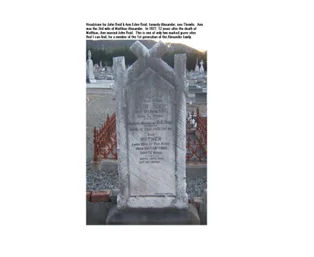
Fig. 18. Headstone for Ann Eden Reid, formerly Alexander, nee Thewlis. The second wife of Matthias Alexander
For the rest of their lives the Alexander brothers worked, prospered and eventually died on the north-west coast. Matthias was the first to die in 1865, after he caught a chill that developed into pneumonia. Local newspaper reports record that his death was ‘a staggering blow’ for the district (42). In 1870, his widow, Ann Eden married again, to John Reid, and had six more children. She died in 1912
She is buried, under her new married name of Ann Eden Reid, at Wivenhoe Cemetery in Burnie. Her headstone is still intact so she and Harriet, Joseph’s third wife, are the only two remaining headstones for that first generation of the Alexander family. (see Fig. 18)
Joseph was the next to die, in 1878. The cause of his death was described as ‘the decay of nature’. At that time he was living with his family at a farm in what is now Upper Burnie. His death certificate describes him as a ‘farmer’
Alexander Creek, a creek that ran through the property, is still running. The Creek, and Alexander Terrace in Stanley, named after Joseph, are the only two sites that are named after any of the Alexander brothers. (see Fig.s 19 & 20)
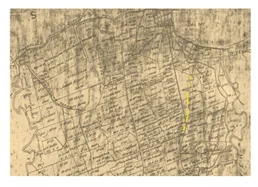 Fig. 19. Upper Burnie. The yellow line indicates Alexander Creek | 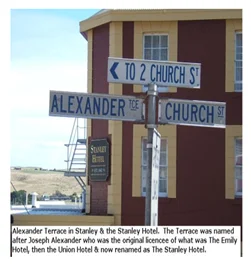 Fig 20. Alexander St Stanley | 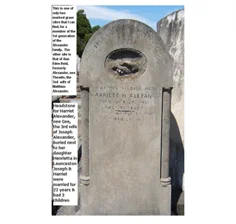 Fig. 21. Headstone for Harriet Alexander, the third wife of Joseph Alexander |
Joseph’s wife Harriet, known in the family as ‘Aunt Joe’, lived on until 1912. She was considered quite wealthy and there are some reports of a family squabble between the three daughters about who should get what. She is buried at Carr Villa Cemetery in Launceston, (Fig. 21), together with her third daughter Henrietta and her husband James King Percy. Perhaps Henrietta won the squabble!
Descendants of the Percy line continue farming on Table Cape to this day and their land includes the Alexander family cemetery. John lived on to 1898. He died, aged 85, on his property at Detention River, near Table Cape. His wife Mary Ann, had died twenty years earlier, in 1878. His only child to marry and have children, Martha Ann, died in 1911 and is buried in that unmarked grave at Carr Villa Cemetery in Launceston.
The three Alexander brothers have long gone but their family legacy continues (see Fig.s 22 & 23) The current (incomplete) Alexander family tree now extends to nine generations. FM sits in the third generation, grandson to Matthias.
All three brothers are buried at the family cemetery on Table Cape (along with, it is said, about 60 other family members and pioneers of the area).
Some regard the current neglected state of this pioneer burial site as a sad comment on how quickly we forget the old pioneers. (see Fig. 24 The Alexander family cemetery at Table Cape (circa 2010). The two headstones visible are for Capt. John Jones, son in law of convict John Alexander, and Richard Dowling, son of John Dowling. Dowlings and Alexanders have marriage connections going back several generations in England)
Others might say that the brothers were men of the land. They owned land, worked the land, lived on it and now they lie in it. Land that is still productive, quite recently growing potatoes.
Would the three brothers, with their long agricultural history, object to their burial site being used for agriculture? You choose and think about them when you next eat potatoes!
And it is not only in Tasmania that the Tasmanian Alexanders have left their mark. From convict beginnings to the world stage today. A prominent pioneer family in the early days of this area and still making a contribution to this day.
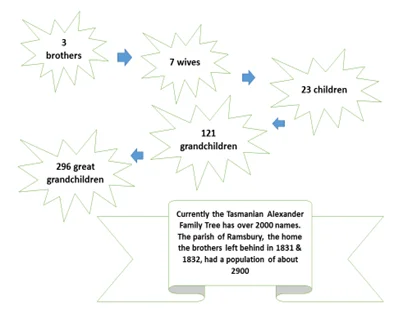 | 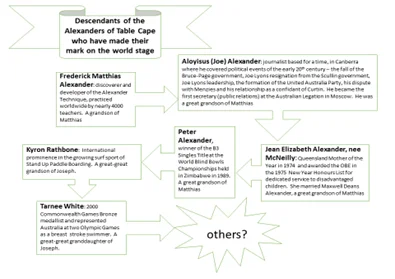 | 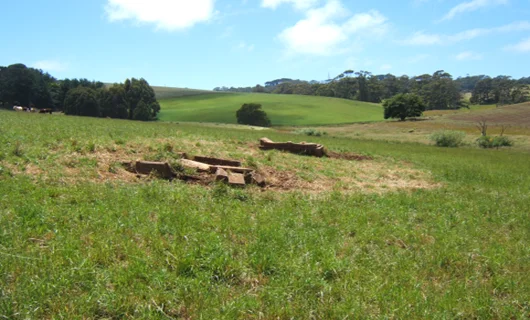 |
Note from author: Family research is not an exact process. Records disappear, or are wrongly recorded, newspaper accounts are less than accurate, and so on. This account represents aspects of the Alexander family history that I have put together from many sources. If there are errors, and with family research that is always a possibility, they are down to me. If anyone has any information that either supports or disputes what I have written, please get in touch. Information shared is knowledge gained. My particular thanks to the Alexander family in Tasmania for their help, in particular the late Ken Alexander and his daughter Sue for access to their family information.
ANNOUNCEMENTS
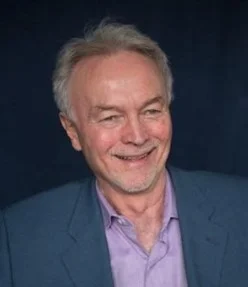
JOHN NICHOLLS AUSTRALIAN VISIT 2024
SYDNEY: FEBRUARY 2-5 + MELBOURNE: FEBRUARY 9-26
John Nicholls will be returning to Australia in 2024 to provide continuity for those wishing to deepen their understanding of his way of teaching and training Alexander Technique teachers.
For full details and booking links go to:
https://www.austat.org.au/john-nicholls-australia-visit-2024/
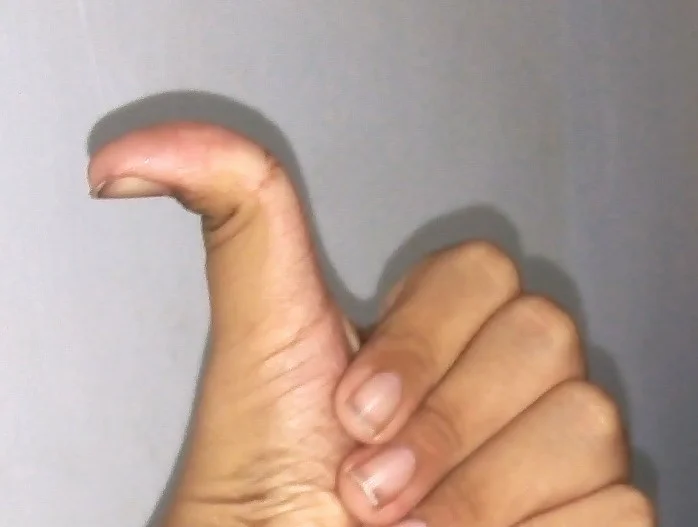
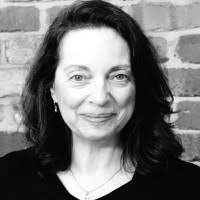
Teaching the Hypermobile Student
With Helene Goldberg
Saturday February 10, 2024 from 10am to 1pm
This is the first of a full weekend of workshops run in Brighton by the School for F.M. Alexander Studies
According to Arthritis Australia, up to 10% (1 in 10) of the population has some joint hypermobility.
Hypermobility can present distinct challenges for individuals seeking the benefits of the Alexander Technique. In this workshop, we will delve into understanding the nuances of hypermobility, Hypermobility Spectrum Disorder (HSD) and Hypermobile Ehlers-Danlos Syndrome (hEDS) and exploring targeted strategies to guide your students towards optimal postural awareness, balance, and coordination.
The School for F.M. Alexander Studies is offering this workshop for teachers as part of our ongoing continuing professional development offerings. Helene ran a one hour session at the 2023 Austat Conference which was very well received and this session gives her and attendees to delve deeper into this topic You can continue into the afternoon for a Smart Yoga class with Caroline Blackshaw, which will include discussion on issues which hypermobile people (like Caroline) have in practicing yoga and other movement modalities.
Helene Goldberg attended the 12th International Alexander Technique Congress in, Berlin, where renowned U.K. Rheumatologist Dr. Philip Bull delivered a keynote address on Hypermobility. Helene was taken aback as she listened to the list of signs and symptoms associated with Hypermobility Spectrum Disorders, realising just how many boxes she could check off!
Back in Melbourne, curious to learn more about this condition and the impact on people's health and lifestyle of Hypermobility, Hypermobility Spectrum Disorders (HSD), and Hypermobile Ehlers-Danlos Syndrome (hEDS), she participated in two Continuing Professional Development online series run by the Ehlers-Danlos Society for Allied Health Professionals in 2023.
From her own experience, Helene is aware of the enormous potential for people living with hypermobility to benefit from learning the Alexander Technique, and is also very clear from a teacher’s perspective that - as with many other “invisible” health conditions - it is vitally important to understand how the condition can present itself, how a student might respond (both positively and sometimes negatively), and what changes she might need to make to how she works with her hypermobile student.
Helene will be launching her new workshop in the first part of 2024 called “Hypermobility and The Alexander Technique”, designed specifically for people with hypermobility, their support people, and anyone generally interested in this topic. For further information, visit helenegoldberg.com.au.
For booking and more information https://www.alexanderschool.edu.au/hyper-mobility
CLICK HERE to view In The Moment Submission Guidelines
CONTACTING AUSTAT:
All correspondence with AUSTAT to be sent to: AUSTAT, PO Box 409, Benalla Vic 3671
All emails to Council to be sent to secretary@AUSTAT.org.au
'The views and opinions expressed in this newsletter belong to the designated author. They may not necessarily be consistent with those of – nor indicate endorsement by – either the editor, or the AUSTAT Council. Advertised products or services are not necessarily endorsed by editor or Council.'
Procedure for correspondence between the membership and the council.
Council has developed the following guidelines on its handling of correspondence from the membership.
- All correspondence should be directed to secretary@austat.org.au
- Emails which are sent to multiple addresses are inappropriate and will not be considered as correspondence to council. Therefore they will not be acknowledged or answered.
- Receipt of correspondence will be acknowledged within seven days. All correspondence to the secretary will be tabled at council meetings.
- The contents of any correspondence will not normally be responded to immediately. Please remember that all council members are volunteers and have to individually choose how to most effectively allocate their time. They will respond to tasks based on their evaluation of their urgency in light of the aims and objects for which our society has been established.
- Please be aware that Karen Nankervis our administrator can only do paid work like responding to communications upon the request of council. Individual members do not have the authority to give work to Karen.
AUSTAT Administrator - Karen Nankervis
Mobile 0407 261927 | mail: info@austat.org.au
